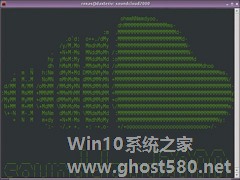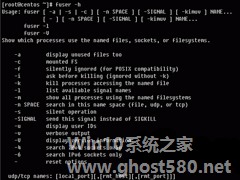-
在Linux上如何使用ext3grep恢复文件
- 时间:2024-11-23 00:03:05
大家好,今天Win10系统之家小编给大家分享「在Linux上如何使用ext3grep恢复文件」的知识,如果能碰巧解决你现在面临的问题,记得收藏本站或分享给你的好友们哟~,现在开始吧!
Linux系统操作中,有时会不小心删除重要文件,而能够恢复删除文件的软件有很多,ext3grep就是其中的一种,ext3grep在使用中需要用到不少命令,下面小编就给大家介绍下Linux使用ext3grep的方法。
步骤:
目前的最新版本是:ext3grep-0.10.2.tar.gz
我系统的环境是:虚拟机
[root@localhost bin]# uname -a
Linux localhost.localdomain 2.6.18-164.el5 #1 SMP Tue Aug 18 15:51:54 EDT 2009 i686 i686 i386 GNU/Linux
[root@localhost bin]# cat /etc/issue
Red Hat Enterprise Linux Server release 5.4 (Tikanga)
安装很简单
tar zxvf ext3grep-0.10.2.tar.gz
cd ext3grep-0.10.2
。/configure --prefix=/usr/local/ext3grep
make
make install
顺利安装完成。
然后进入么安装目录看一下,只有一个bin
[root@localhost ext3grep]# pwd
/usr/local/ext3grep
[root@localhost ext3grep]# ls
bin
进到bin里面看一下
[root@localhost ext3grep]# cd bin
[root@localhost bin]# ls
ext3grep
我们可以看一下帮助,下面是部分
[root@localhost bin]# 。/ext3grep -h
Running ext3grep version 0.10.2
。/ext3grep: invalid option -- h
No action specified; implying --superblock.
Usage: 。/ext3grep [options] [--] device-file
Options:
--version, -[vV] Print version and exit successfully.
--help, Print this help and exit successfully.
--superblock Print contents of superblock in addition to the rest.
If no action is specified then this option is implied.
--print Print content of block or inode, if any.
--ls Print directories with only one line per entry.
This option is often needed to turn on filtering.
--accept filen Accept ‘filen’ as a legal filename. Can be used multi-
ple times. If you change any --accept you must remove
BOTH stage* files!
--accept-all Simply accept everything as filename.
--journal Show content of journal.
--show-path-inodes Show the inode of each directory component in paths.
Filters:
--group grp Only process group ‘grp’。
--directory Only process directory inodes.
--after dtime Only entries deleted on or after ‘dtime’。
--before dtime Only entries deleted before ‘dtime’。
--deleted Only show/process deleted entries.
--allocated Only show/process allocated inodes/blocks.
--unallocated Only show/process unallocated inodes/blocks.
--reallocated Do not suppress entries with reallocated inodes.
Inodes are considered ‘reallocated’ if the entry
is deleted but the inode is allocated, but also when
the file type in the dir entry and the inode are
different.
--zeroed-inodes Do not suppress entries with zeroed inodes. Linked
entries are always shown, regardless of this option.
--depth depth Process directories recursively up till a depth
of ‘depth’。
Actions:
--inode-to-block ino Print the block that contains inode ‘ino’。
--inode ino Show info on inode ‘ino’。
If --ls is used and the inode is a directory, then
the filters apply to the entries of the directory.
If you do not use --ls then --print is implied.
--block blk Show info on block ‘blk’。
If --ls is used and the block is the first block
of a directory, then the filters apply to entries
of the directory.
If you do not use --ls then --print is implied.
--histogram=[atime|ctime|mtime|dtime|group]
Generate a histogram based on the given specs.
Using atime, ctime or mtime will change the
meaning of --after and --before to those times.
--journal-block jblk Show info on journal block ‘jblk’。
--journal-transaction seq
Show info on transaction with sequence number ‘seq’。
--dump-names Write the path of files to stdout.
This implies --ls but suppresses it‘s output.
--search-start str Find blocks that start with the fixed string ’str‘。
--search str Find blocks that contain the fixed string ’str‘。
--search-inode blk Find inodes that refer to block ’blk‘。
--search-zeroed-inodes Return allocated inode table entries that are zeroed.
--inode-dirblock-table dir
Print a table for directory path ’dir‘ of directory
block numbers found and the inodes used for each file.
以上就是关于「在Linux上如何使用ext3grep恢复文件」的全部内容,本文讲解到这里啦,希望对大家有所帮助。如果你还想了解更多这方面的信息,记得收藏关注本站~
Win10系统之家文★章,转载请联系本站网管!
相关文章
-

Linux系统操作中,有时会不小心删除重要文件,而能够恢复删除文件的软件有很多,ext3grep就是其中的一种,ext3grep在使用中需要用到不少命令,下面小编就给大家介绍下Linux使用ext3grep的方法。
步骤:
目前的最新版本是:ext3grep-0.10.2.tar.gz
我系统的环境是:虚拟机
[root@localho... -

对于喜欢音乐的朋友来说,SoundCloud是个不错的音乐软件,SoundCloud是德国的网站,现在也有客户端了,在Linux安装SoundCloud后,就能够在命令行中播放音乐,下面小编就给大家介绍下Linux安装SoundCloud的方法。
安装
对于Debian或者Ubuntu用户,如下安装:
$sudoapt-getinstallport... -

Linux系统操作中,为了提高磁盘读写效率,就需要使用到sync命令,很多人对sync命令的用法不是很了解,下面小编就给大家介绍下Linux如何使用sync命令。
先了解一下buffer与cache:
buffer,为了解决写磁盘的效率;
cache,为了解决读磁盘的效率。
Linux系统为了提高读写磁盘的效率,会先将数据放在一块buf... -

在Linux中,fuser工具可用来查询文件的用户,除此之外,fuser还有很多用途,能够搭配参数使用,下面小编将针对fuser工具的使用方式给大家做个详细介绍,希望对你有所帮助。
lsof也具备类似的功能,它也能够找出正在对指定文件访问的进程,两者的区别是fuser在于它可以一次杀死那些正在访问指定文件的进程。
fuser常用的场合是:
fuse...




